Autonomous Fast-Time Flight Modeling and Simulation for Safety: Rationale
 |
The historic database of aviation accidents is too sparse to serve as a source of statistics on multifactor (off-normal, critical, anomalous, ‘chain reaction’) flight cases. |
 |
Multifactor flight scenarios cannot be examined in full in real flight experiments and manned simulations. |
 |
Manned and desktop simulations are too labor-intensive and too lengthy to screen reliably large multifactor flight domains. |
 |
Modern techniques (mathematical modeling, artificial intelligence, computer simulation, virtual reality) are under–used for safety research and pilot training. |
 |
New training technologies aimed at ‘de-materialization’ (virtualization) of dangerous experiences in multifactor flight domains must be developed. |
 |
Design uncertainties, test and certification costs, a human pilot’s knowledge gaps and operational anomalies related to multifactor operational conditions must be reduced as early as possible during the vehicle lifecycle. |
Main Principles of Flight Safety Enhancement in Multifactor Situations
‘Knowledge is Power’
 |
The ‘pilot (automaton) – aircraft – operating environment’ system dynamics model is employed as a generator of new knowledge on multifactor flight safety. |
 |
Using the system dynamics model, complex flight domains can be screened for anomalies – both in depth and in breadth. |
 |
Virtual experience on multifactor flight can be learned systematically in advance by means of carefully planned and controlled fast-time M&S experiments. |
‘Single-Platform’ Solution
 |
‘After all, complicated tasks usually do inherently require complex algorithms, and this implies a myriad of details. And the details are the jungle in which the devil hides. The only salvation lies in structure’ [N. Wirth]. |
 |
The system dynamics model (mathematical equations, computational algorithms, data structures, software and output maps) must be generalized in order to be capable of simulating various flight scenarios, risk factors and multifactor composites. |
Why Fast-Time Virtual Flight Test, Operation and Pilot Training?
|
By using classic flight research techniques, the behavior of the ‘pilot (automaton) – vehicle – operating environment’ system in multifactor situations cannot be examined – proactively and exhaustively – due to the following pressures:
|
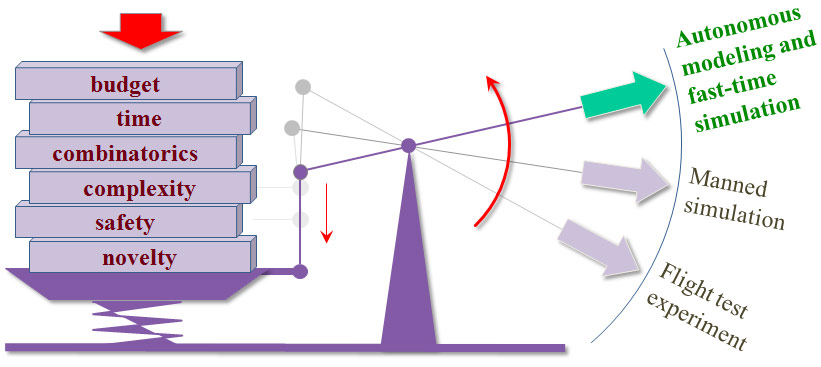 |
 |
The ‘virtualization’ of flight test and operation under multifactor conditions emerges as a natural solution to this problem. |
Component Techniques. Overall Goal
Component Techniques
The component techniques of the virtual flight test and operation concept include: flight dynamics, unsteady aerodynamics, situational control, mathematical modeling, artificial intelligence, knowledge mapping, graph theory, numeric methods, data structures, computer simulation, computer graphics, virtual reality, etc.
The resulting flight research concept (the ISAFE-VATES concept) includes:
- Intelligent Situational Awareness and Forecasting Environment (ISAFE methodology), and
- Virtual Autonomous Test and Evaluation Simulator (VATES technology).
Overall Goal
The overall goal is to develop a single-platform software solution for a range customer-focused products and services aimed at fast-time flight modeling and simulation, knowledge ‘mining’ and mapping, safety risk analysis and prevention in the system dynamics under multifactor conditions – affordably, comprehensively and early in the lifecycle.
Autonomous Fast-Time vs. Manned Real-Time
Flight Simulation for Safety
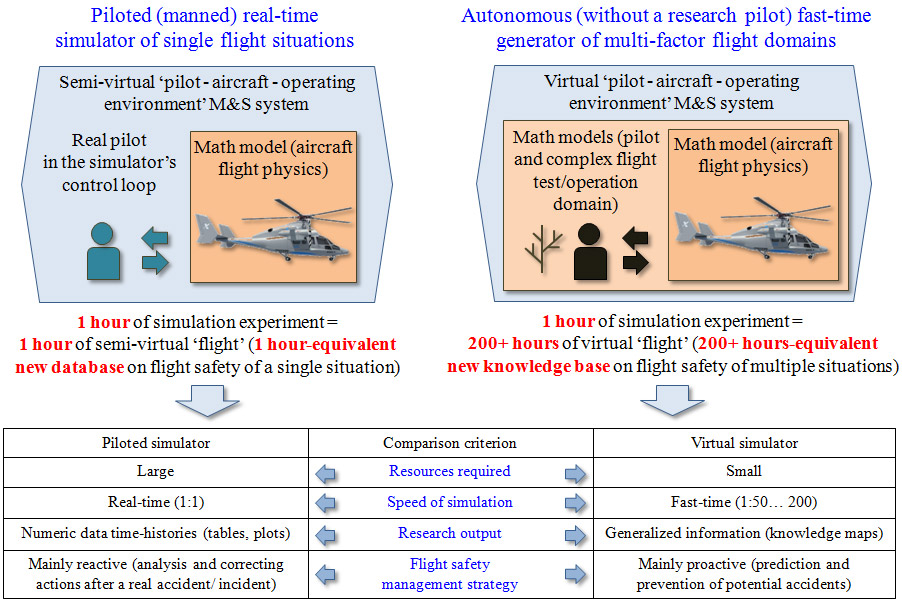
System Dynamics Model as a Virtual Test/ Operation Article
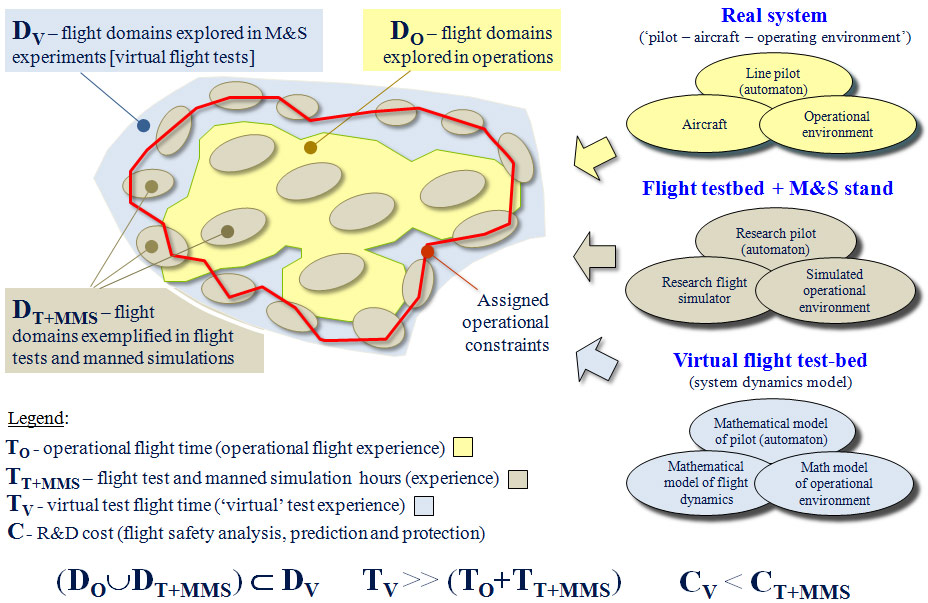
Exemplified Flight Envelope vs. ‘Intelligent’ Flight Envelope
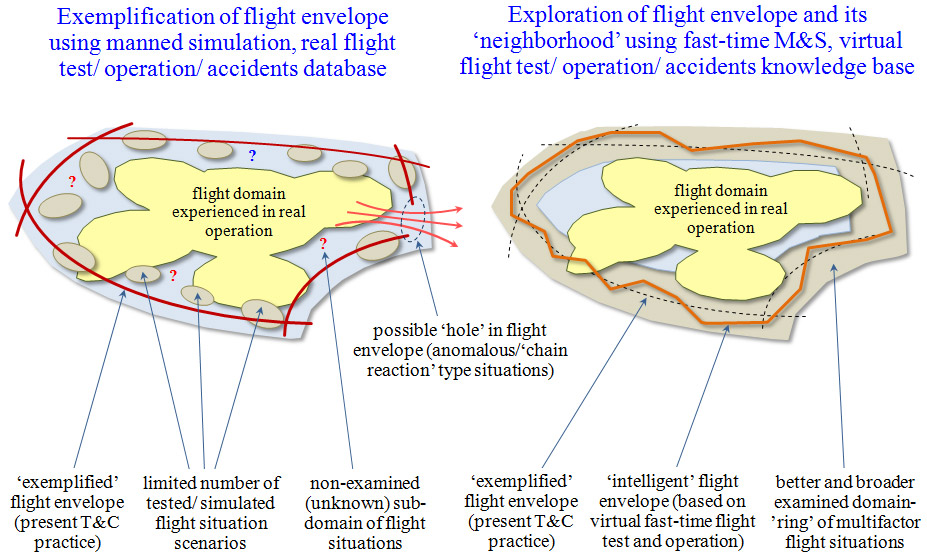
Main Defects of a Human Pilot’s Situational (Tactical) Knowledge System – Natural Tree Analogy
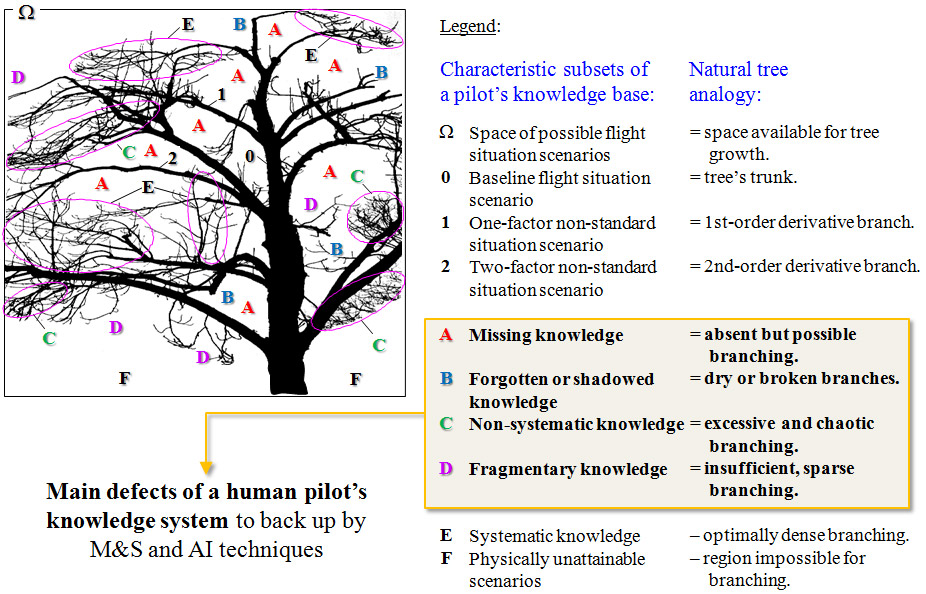
Fractal Tree Growth as Ideal Model of Human Pilot’s Situational Experience Development in Long-Term Memory
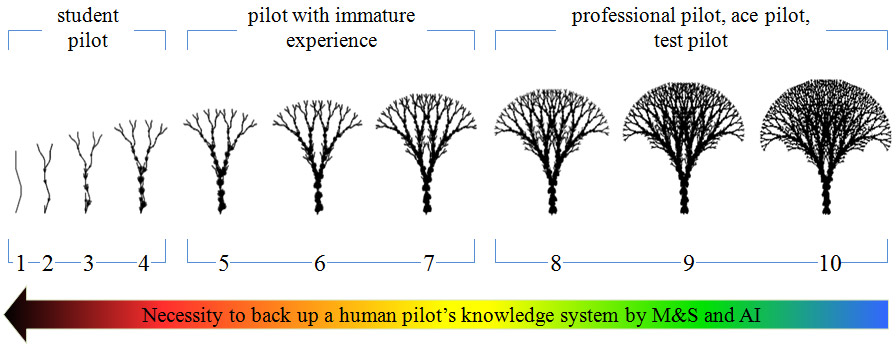
Legend: 1,2, …, 10 – the maturity levels of a human pilot’s experience in addressing multifactor flight situations (a work classification).
|
|
The outcome of virtual flight test and operation is a comprehensive tree-type knowledge base of the system dynamics and safety, with the volume 103 … 105 times exceeding the volume of piloting experience accumulated by all pilots for all aircraft in multifactor flight situations.
|
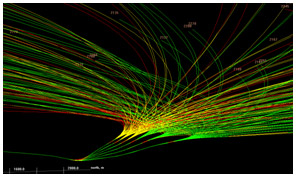 |
Present vs. Proposed Design, Flight Test and Certification Cycle
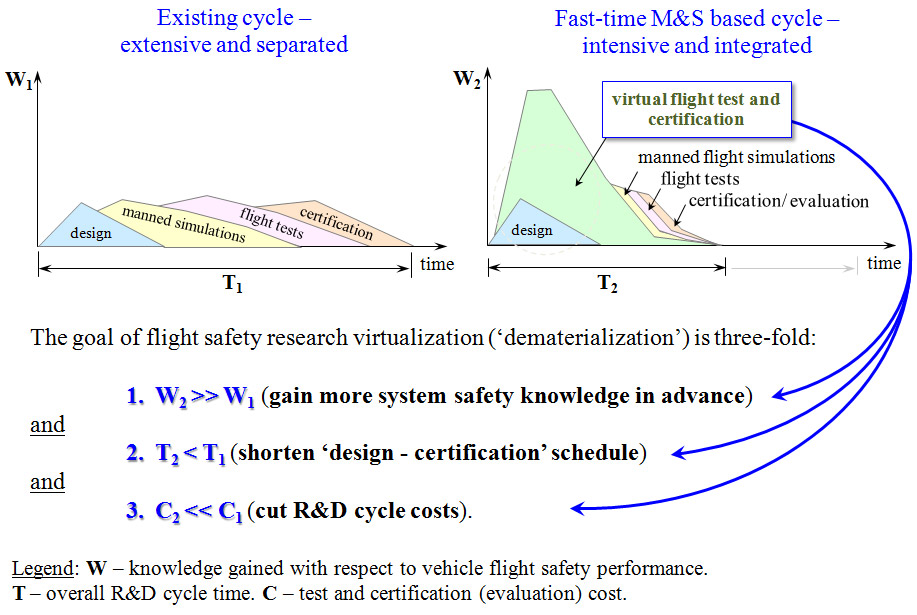
Comments are closed.









